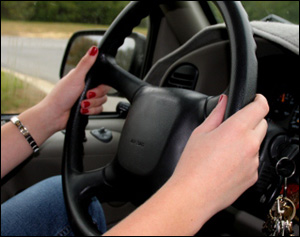 So you now have a teenage driver? In addition to worrying about their driving habits, the extra wear on your car, and of course all the other things teens can get into when they start driving, here are some things you should consider when it comes to buying auto insurance:
So you now have a teenage driver? In addition to worrying about their driving habits, the extra wear on your car, and of course all the other things teens can get into when they start driving, here are some things you should consider when it comes to buying auto insurance:
1 – Yes, Your Rates Will Go Up
Adding a teenage driver to your auto insurance policy will typically add 50 to 100 percent to the cost of a standard auto policy. So if you’re currently paying $700 a year for a policy, you can expect it to jump to between $1,050 and $1,400 the day you add your teenage driver. And that’s if you’re only at $700 a year now.
The reason for this is all based on statistics: Auto Insurers recognize that teenage drivers are less experienced and are far more likely to cause or be involved in accidents than any other age group. Worse yet, teen drivers are also tend to speed more than others and receive more moving violations – these alone can trigger huge rate increases.
2 – Driver’s Education and Good Grades Can Lower Rates
There are several ways for students to bring those stratospheric teen insurance rates down.
Does your teen’s school have a driver’s education class? If so, make sure they enroll in it. If not, then look into having them take a certified driving course with a professional teacher.
Some insurance companies will lower rates if the high school or college student maintains a B average. This is a good point for encouraging your teen to get good grades. It varies according to the company so check with several companies. Typically, students with B-average grades or better can qualify for a good student discount. At upwards of 25 percent, it’s worth looking into– and giving your teen added incentive for better grades.
If your teen goes out of state for college and does not take a car, you should be able to get a discount for the period that they are away and not driving.
3 – Modify Your Policy
Take a look at your auto insurance policy and follow these guidelines:
● Raise your comprehensive and collision deductible. The amount should be $1000 at least. This lowers your premium and eliminates the need to file small claims. A good habit to start would be to put money away in an emergency fund to cover the deductible should an accident occur.
● If the teen is driving an older car, look at eliminating this deductible totally as the replacement cost of the vehicle would not even meet the deductible.
● Do not lower the liability coverage. This is definitely a no-no. If an accident does occur, you have to be covered here.
4 – Bundle Your Insurance Policies
As with any insurance, bundling does help. Put your house and car insurance under the same company. If you have been with one company for a long time and their rates are just a bit higher, think about staying there as you are a known entity to them and if all your insurance is with them, it may work out better in the long run. Grouping all of your insurance policies – auto, life, boat, home/renters — into one insurance company can knock as much as 10 percent off your total premium.
5 – To File or Not to File the Claim
Minor scrapes and dings are common, and they often fall under the cost of the deductible. Before filing a claim for a small incident where no one is hurt, and the damage is merely cosmetic, consider paying the costs out of pocket– or better yet, have your teen do so. Insurance is used to save you from catastrophe, not to budget your car repairs. Filing an unnecessary claim can lead to premium increases that, over time, far exceed the value you got back by asking the insurance company to pay for one small fix.
Last and perhaps most important, shop around! The more you learn, the better prepared you are to make a good decision. Not all companies treat teen drivers the same. With such huge increases possible, the potential savings from one company to the next can be huge, too.
About the author: Alex Marshall is a writer that helps people who need to obtain an SR22 find one. You can also learn about SR22 form options.